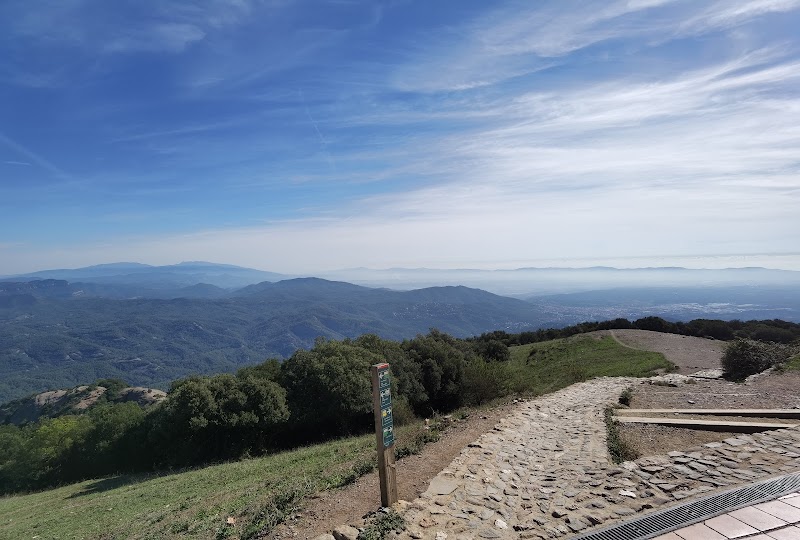Navigating Transportation Near Barcelona: A Practical Guide
Discover how Barcelona's comprehensive transportation options connect the city's vibrant core to the stunning landscapes of Catalunya. This guide offers practical tips and key information to navigate metro, buses, trains, and bike shares, ensuring your adventure moves smoothly.
Master the Metro Map
Familiarize yourself with the 12-line metro system and its key transfer stations to save time and reach your destinations with ease.
Choose the Right Transit Ticket
Use multi-trip tickets like the T-casual or unlimited Hola Barcelona card for cost-effective travel across metro, buses, and trams.
Plan for Regional Transport
Reserve time to catch regional trains or buses for day trips outside the city, such as visits to Montserrat or Sitges.
Use Bike Shares for Short Trips
Rent electric scooters or bikes to cover short distances efficiently while enjoying fresh air and street-level views.
Navigating Transportation Near Barcelona: A Practical Guide
Barcelona thrives on a dynamic and efficient transportation network, making it simple to traverse the city and explore Catalunya with ease. From sleek metro lines threading beneath lively neighbourhoods to the rhythmic clatter of trams along palm-lined boulevards, every mode offers a gateway to discovery. Key transit hubs pulse with energy, connecting the vibrant heart of Barcelona to coastal towns and mountainous landscapes nearby.
Public transportation in Barcelona centers on a comprehensive metro system covering 12 lines, quickly ferrying passengers across central districts and beyond. Complemented by an extensive bus network, travelers can reach hidden corners where colorful markets and historic sites beckon. Taxis and ride-share services hover on call, providing flexible options when time is tight or routes diverge from fixed lines.
For journeying outside the urban core, regional trains and buses lead to sights like Montserrat’s rugged peaks or Sitges’ sun-soaked shores. The Barcelona-El Prat Airport, a short ride from the city center, acts as the main gateway for international travelers. Notably, bike-sharing programs and electric scooters add an active, eco-friendly dimension for short hops through the city’s walkable neighborhoods.
Understanding transportation keywords here reveals more than simple routes. The metro’s punctuality, the wide coverage of public transit, accessibility around Catalunya, and affordable ticket options all shape the visitor experience. Knowing the best metro lines for efficient transfers, choosing the right ticket like the T-casual or Hola Barcelona card, and planning connections to regional trains unlock smoother, richer adventures.
Barcelona’s transportation map extends far into the region, mirroring its layered history and urban flow. Whether threading through Gothic alleys or venturing into natural parks, each transit choice brings you a step closer—from metro gates humming with life to coastal buses pushing forward along sea-bluffed roads. Prepare your routes, pack your essentials, and let the journey move you.
Nearby Trips
All Adventures
Boat Charters
Water Activities
Adventures near Barcelona
Discover the unique and memorable adventures that make Barcelona special.
Frequently Asked Questions
What is the most cost-effective way to use public transport in Barcelona?
Purchasing a T-casual card (10 trips) or an unlimited Hola Barcelona card tailored to your stay length offers the best value. Both are accepted across metro, bus, and tram networks, allowing seamless transfers without extra charges.
How accessible is transportation for travelers with mobility issues?
Barcelona’s metro and bus systems are continuously improving accessibility with elevators, ramps, and reserved spaces. Most major stations and buses cater to wheelchairs, but it’s advisable to check individual line conditions ahead of travel.
Can I take my bike on public transport in Barcelona?
Bikes are allowed on buses and some metro lines during off-peak hours. On regional trains, bicycles are permitted but may require a small additional fee. Always verify schedules for specific line restrictions.
Are there any hidden or less crowded transport routes worth considering?
Certain tram and bus lines servicing outer districts and parks offer a quieter alternative to bustling central lines. For instance, bus routes heading toward Collserola Park reveal scenic forest views often missed by typical tourists.
How safe is the transportation system in Barcelona at night?
Night buses and metro extensions operate with regular schedules and maintain good safety records. Standard travel precautions apply, particularly on less crowded lines after midnight.
Which metro line gives the best views or interesting stops?
Line L3 offers a rich journey through Barcelona’s cultural hubs including Plaça Catalunya and Park Güell. While underground, exit points connect quickly to green spaces, lively markets, and historic neighborhoods worth wandering.
Recommended Gear
Comfortable Walking Shoes
Ideal for navigating metro stations and city streets with ease, supporting varying terrain and long days on foot.
Reusable Water Bottle
Stay hydrated during hotter months while exploring the city and its outskirts.
Transit Card or Mobile App
Key for smooth entrances to metros, buses, and trams, and saves time with contactless payments.
Light Rain Jacket
Helps you stay dry during sudden spring showers without adding bulk.
Local Insights
Hidden Gems
- "Collserola Natural Park accessed via FGC train line"
- "El Carmel Bunkers viewpoint accessible by bus"
Wildlife
- "European hoopoes nesting in urban parks"
- "Common kestrels soaring above city outskirts"
History
"Barcelona’s transport hubs often occupy historic sites, like the Estació de França station, a Belle Époque architectural gem blending past with modern transit."
